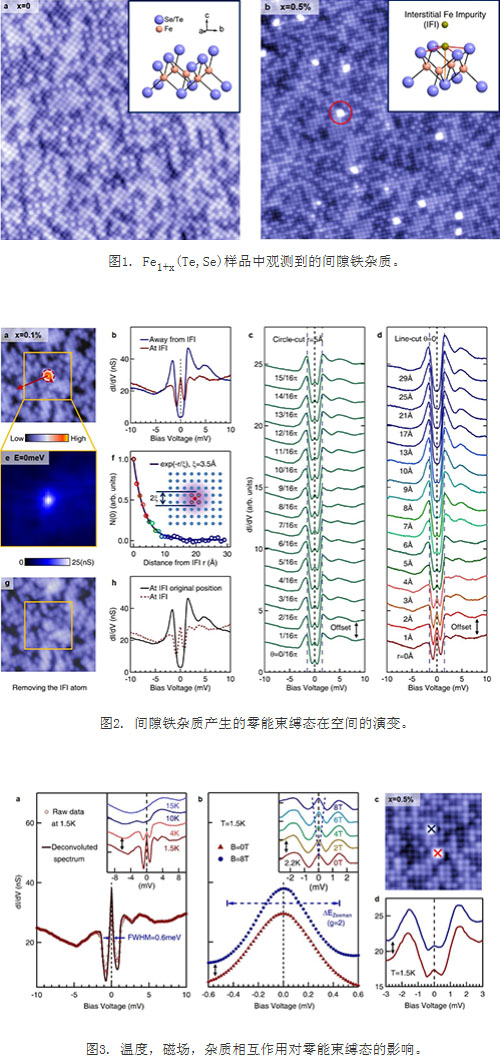In the microscopic world, electrons that conform to Fermi statistics form bosons through pairing, and their agglomerates form superconducting ground states, making the material in the macroscopic world superconducting. In spectroscopy experiments, electron pairing is reflected as a measurable superconducting energy gap. The impurity atoms in the superconductor may destroy the pairing between the electrons and form a bound state in the energy gap. By observing the various features of the bound state, including its corresponding energy and its spatial distribution, one can thoroughly study the intrinsic properties of the superconducting ground state. The most interesting is the zero-energy bound state because it implies unusual superconductor pairing symmetry or special topological properties. Recently, Yin Jiaxin, a doctoral student of the Institute of Physics of the Chinese Academy of Sciences/Beijing National Laboratory for Condensed Matter Physics, used a cryogenic high-resolution scanning tunneling microscope under the guidance of Pan Xiaoheng of the EX8 group and Ding Hong, a researcher of the EX7 group, in Houston. A series of iron-based superconductors Fe1+x (Te, Se) grown by Wu Hao, a researcher at the University Superconductivity Center, found a very sharp zero-energy conductance peak on the single-atom iron impurity at the interstitial sites. By transporting atoms, they confirmed that the bound state was indeed induced by iron impurities. This zero-energy bound state exists only within 1 nanometer of a single iron impurity atom and is of the same nature. The most peculiar is that its energy is very robust and strictly zero energy, even if plus 8 Tesla magnetic field (100 times the magnetic field of ordinary magnets), or make two independent zero-energy bound states close to each other To make it deviate from zero energy or produce chapped. In order to verify the stability of this zero-energy bound state, they also repeated the experimental results on the instrument of the Institute of Physics, Institute of Physics and Physics, supersonic research group, and studied systematically the effects of different magnetic fields and magnetic flux eddies and zero-energy bound states. Interactions. Through careful discussions with the theoretical staff of the Institute of Physics, the Hu Jiangping Group and Professor of Boston College Wang Ziqiang, they believe that such a zero-energy bound state is very different from the impurity state in conventional superconductors. In general superconductors, magnetic or non-magnetic impurities generally produce a symmetrical pair of bound states on a positive and negative energy, and under the action of a magnetic field, splitting occurs even in the normal bound state that happens to be zero energy. (The Xue Qikun team of Tsinghua University studied the FeSe thin-film material and discovered that excessive iron impurities induce a pair of bound states instead of a zero-energy bound state.) Therefore, the incorporation of Te may have a great influence on the system. Te has a greater spin-orbit coupling than Se, which is likely to change the topological properties of the material. The observation of such a robust zero-energy bound state in the experiment is in agreement with the nature of the Mayorana fermions in the theoretically predicted topological superconductors. It is speculated that it may be the Mayorana Fermi which scientists have been pursuing in recent years. . The results of this study were published in Nature Physics on July 1st (Nature Physics 11, 543 (2015)). The research work was supported by the "973" project of the Chinese Academy of Sciences and the Ministry of Science and Technology, the National Natural Science Foundation of China, and the United States related scientific funds. AC Motor Ball Style Ceiling Fan Light Propeller Ceiling Fan,Low Profile Ceiling Fan With Light,Patio Fan,Kids Ceiling Fans JIANGMEN ESCLIGHTING TECHNOLOGY LIMITED , https://www.jmwindfansummer.com